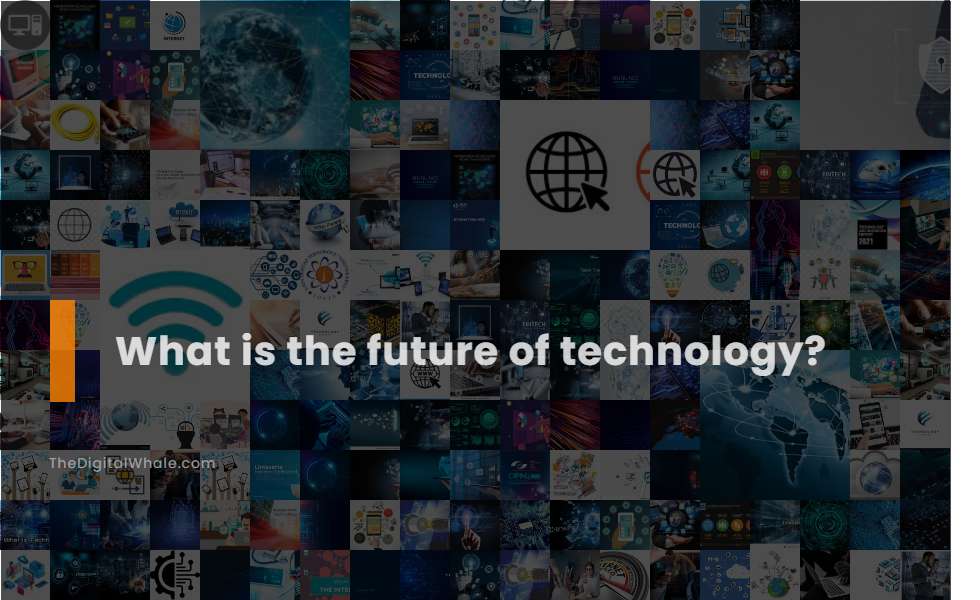What Is the Future of Technology?
What are the ramifications of climate change on energy? What are some of the opportunities and challenges relating to the future of technology? Let's find out more about What Is the Future of Technology?.

Artificial Intelligence (AI) and Machine Learning: Transforming decision-making, automation, and problem-solving across industries.
The future of AI and machine learning involves transformative advancements in decision-making, automation, and problem-solving across various industries, including improved bias and fairness in machine learning, enhanced computer vision for healthcare and e-commerce, and advanced natural language processing for conversational agents. These technologies will also see widespread adoption in new sectors such as manufacturing and healthcare. For more insights on these developments, visit the Artificial Intelligence Trends blog.
Internet of Things (IoT): Increasingly connecting smart devices and objects to the internet, driving Big Data and AI growth.
The future of IoT involves several key trends, including the adoption of 5G networks for faster and more reliable connectivity, the integration of AI and machine learning for smarter decision-making and predictive maintenance, the use of edge computing for local data processing, and the application of digital twins and blockchain for enhanced security and system management. Additionally, the integration of IoT with the Metaverse is expected to create immersive experiences across various sectors such as gaming, entertainment, and retail.
5G and Zero Latency Connectivity: Revolutionizing wireless networking with faster speeds, reduced latency, and enhanced reliability.
The future of technology, particularly with 5G and its successors, promises revolutionary advancements in wireless networking, featuring significantly faster speeds, near-zero latency, and enhanced reliability. These improvements will transform applications such as autonomous driving, remote surgery, and immersive Virtual Reality. For more insights on this cutting-edge evolution, explore the Future of Connectivity as it continues to shape the technological landscape.
Autonomous Vehicles: Self-driving cars and vehicles using advanced sensors, cameras, and AI for safer and more efficient transportation.
The future of Autonomous Vehicles promises a transformative impact on transportation, combining advanced sensors, cameras, and AI technologies to potentially eliminate most accidents and optimize traffic flow. This cutting-edge technology is anticipated to generate significant economic benefits, with forecasts suggesting up to $400 billion in new revenue by 2035. Furthermore, autonomous driving will not only spur economic growth but also enhance environmental sustainability. To delve deeper into how these vehicles are expected to revolutionize the transportation landscape, visit this Roadmap to the Driverless Future, which discusses overcoming challenges such as legal frameworks, cybersecurity, and building public trust. With sensors like cameras, radars, and lidars, and advancements in AI and machine learning, the horizon for safer and more efficient roads is closer than ever.
Quantum Computing: Offering unparalleled computational power to solve complex problems in fields like drug discovery and cryptography.
The future of Quantum Computing promises to unlock solutions to classically intractable problems, particularly in fields like drug discovery, where quantum computers can precisely simulate molecular interactions and chemical reactions, and in sustainable technology, where they can improve battery performance and aid in climate change mitigation. Quantum computers will also enhance industrial chemistry, such as making ammonia production more efficient, and could revolutionize areas like Materials Science and financial modeling.
Related:
How do I use big data in my accounting and finance career? What are some potential benefits of embracing big data in human resources? Let's find out more about What Is Big Data and How Can It Help Your Career?.
Edge Computing: Decentralizing computing and storage closer to data sources for real-time processing and enhanced data security.
The future of Edge Computing is marked by increased adoption, improved performance, and enhanced security, enabling real-time data processing and analysis closer to the data source, which is crucial for IoT integration and reducing latency in various industries. As outlined by Telecom Reseller, Edge Computing will continue to empower real-time data processing and analysis by keeping sensitive information closer to its source, enhancing data privacy and security, and ensuring autonomous operation in remote or disconnected environments. This advancement is making it vital for sectors like telecommunications, medical care, and financial services, showcasing its pivotal role in transforming how these industries manage data and connectivity challenges.
Digital Twins: Simulating scenarios to improve operational efficiency and bridge the physical and digital realms in various industries.
The future of digital twins involves simulating various scenarios to enhance operational efficiency across multiple industries, including optimizing city layouts, predicting and managing climate change, improving healthcare outcomes, and controlling smart cities, among other applications. These virtual replicas will integrate with advanced technologies like AI, quantum computing, and IoT to create highly personalized and efficient systems in fields such as manufacturing, agriculture, and urban management. To delve deeper into this transformative technology, explore the comprehensive analysis on Digital Twin Future.
Generative AI: Creating new content in fields like natural language processing, art, music, and healthcare, raising ethical concerns around bias and misinformation.
The future of Generative AI promises significant economic benefits, potentially adding trillions of dollars annually to the global economy. However, it also raises critical ethical concerns such as the distribution of harmful content, amplification of existing biases, and potential misuse. This situation highlights the importance of responsible development and governance. As discussed on McKinsey Digital's insights, understanding and addressing these challenges is essential to maximizing the positive impact of this transformative technology.
Smart Cities Technology: Integrating IoT, AI, and data analytics to optimize city infrastructure and services for efficiency, sustainability, and improved quality of life.
The future of Smart Cities is set to be revolutionized by the integration of IoT, AI, and data analytics, which work symbiotically to optimize city infrastructure and services. A key focus lies on enhancing Smart Transportation, Smart IoT Devices, Smart Infrastructure, and Smart Energy systems, all aimed at reducing congestion and improving resource management to uplift the quality of life for citizens. By embracing these technological advances, cities can foresee challenges such as traffic congestion and infrastructure needs and address them effectively to create sustainable urban environments. Such advancements are evident at the forefront of [Smart City](https://www.smartcity.co.nz/blog/future-of-smart-cities/), where transformative decision-making driven by the immense capabilities of data analytics is shaping efficient and dynamic urban landscapes. Moreover, by implementing IoT-based solutions and leveraging AI, cities can efficiently manage public utilities, including traffic, sanitation, waste, and energy consumption, using real-time data analysis for a better quality of life for all residents.
Immersive Reality Technology: Advancements in Augmented Reality (AR), Virtual Reality (VR), and Mixed Reality (MR) for enhanced remote work and interactive experiences.
The future of immersive reality technology is poised for transformative advancements in areas like AR, VR, and MR, marked by the integration of AI, enhanced biometric feedback, neurotechnology, and spatial computing. These innovations will significantly impact remote work, education, and other interactive experiences by offering more personalized, accessible, and realistic interactions. By 2024, the evolution into VR 2.0 will introduce seamless AR integration, advanced haptic feedback, untethered devices, and holographic displays, thereby enabling more immersive and collaborative experiences across various industries, including entertainment, education, healthcare, and architecture. For further insights, consider exploring these immersive experience trends on PeekPro, where the focus is on harnessing technology to create engaging and transformative user experiences.
Related:
What are the different uses of the Internet of Things in retail? What are the potential implications of the Internet of Things for the transportation industry? Let's find out more about The Internet of Things and Its Potential for Your Industry.
